Building a Freelance Creative Studio for B2B Enterprise Clients
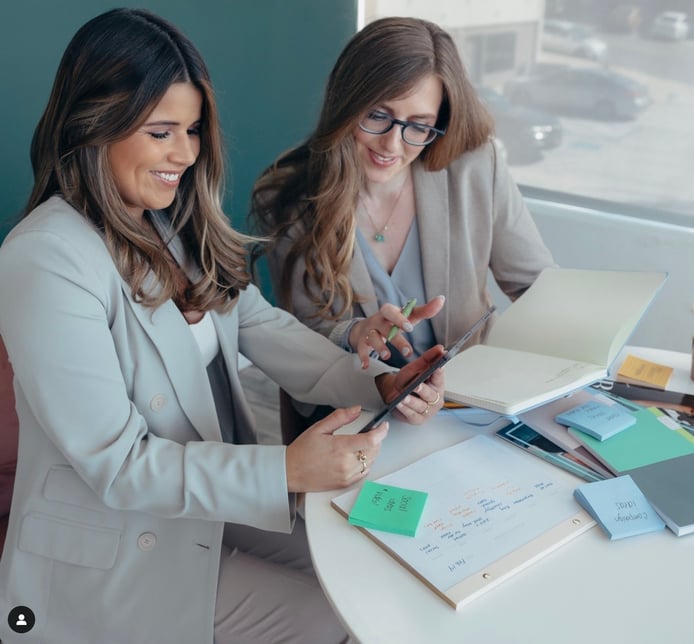
Table of Contents
- Introduction
- Learning at HubSpot
- A passion for design
- The Origins of CXD
- Challenges & rewards of business ownership
- Finding the right audience
- Goals and industry trends
- Combatting challenges
- Advice for aspiring women founders
Introduction
Katherine Boyarsky and Gabby Pinto are an inspiration to female creators everywhere. They are the co-founders of CXD Studio, a women-owned content marketing agency based in Boston, MA.
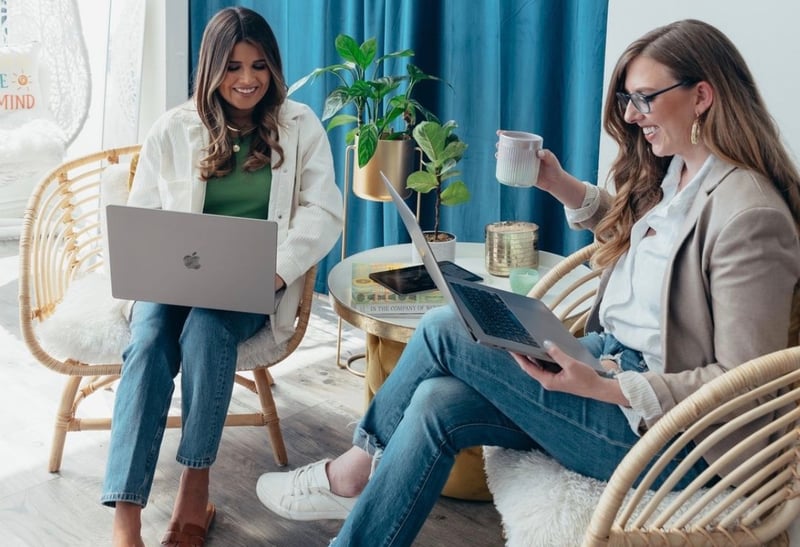
The two women initially met while working at their first marketing jobs — Katherine was a marketing coordinator and Gabby was a graphic design intern. Later, while freelancing, they joined forces to start their own agency in 2017, and the rest is history.
Boyarsky serves as CXD Studio’s acting CMO and Pinto is the CCO. The agency specializes in B2B SaaS and works with companies like HubSpot, Canva, DoorDash, Vimeo, and others. Both women are avid HubSpot users and over the years have applied HubSpot learnings to all of their content marketing projects.
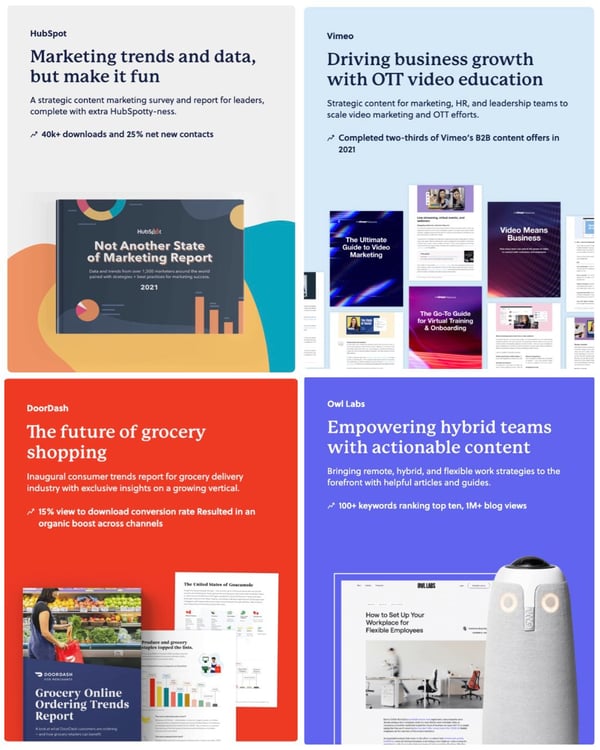
Katherine has a background in copywriting and content marketing and previously worked on the marketing team at HubSpot. She is also a registered nurse who enjoys sipping coffee and hanging with her dog. Gabby is an experienced designer with a background in graphic, web, and UI/UX design. She previously worked at Amazon Pharmacy, Toast, and Athenahealth to name a few. You can often find her decorating her home or dreaming up new projects.
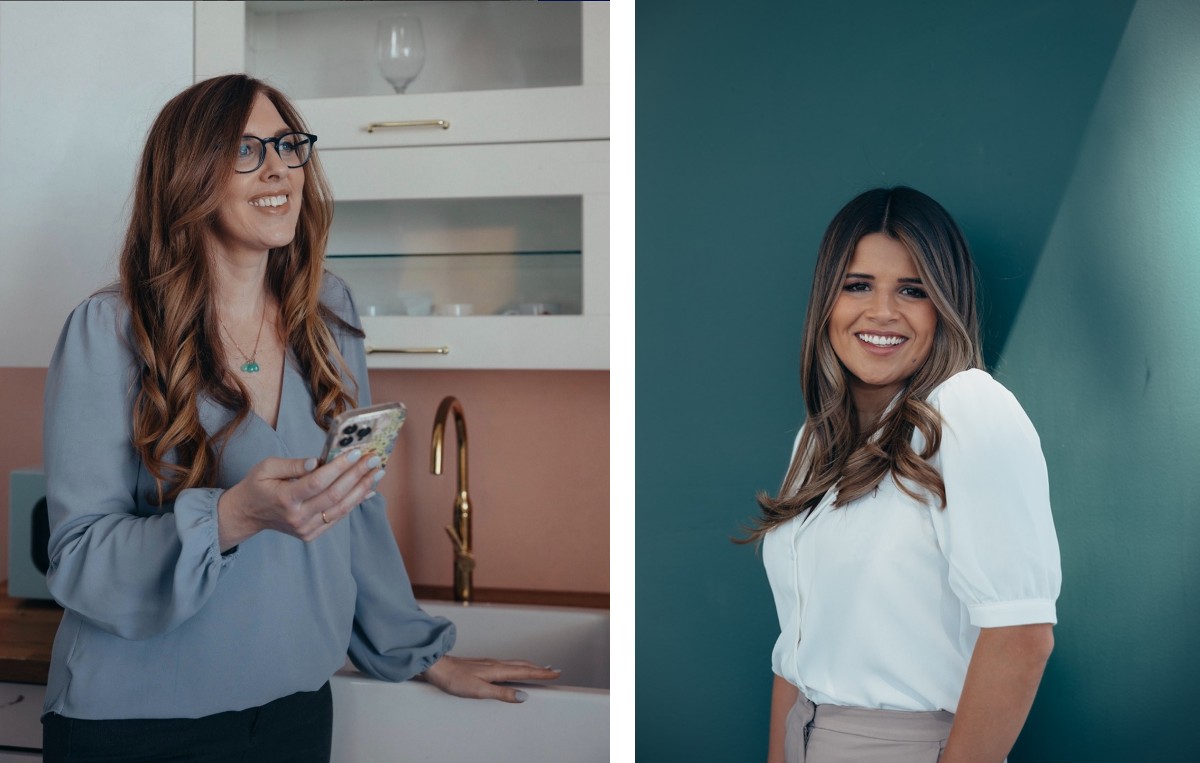
We spoke with Katherine and Gabby to learn more about their marketing backgrounds, the origins of forming CXD Studio, and the challenges and rewards involved with owning a company.
Learning at HubSpot
HubSpot for Startups: In what ways did your time working in various marketing roles with HubSpot help prepare you for later founding your own marketing agency?
Katherine: In my early marketing career, I learned so much from HubSpot. Even before working there, I read the HubSpot marketing blog religiously. In my first role as a marketing associate, I printed a checklist from the end of one of HubSpot’s early ebooks titled “How to Grow 1,000 Twitter Followers Overnight” (I think), and pinned it up on a bulletin board in my office for inspiration.
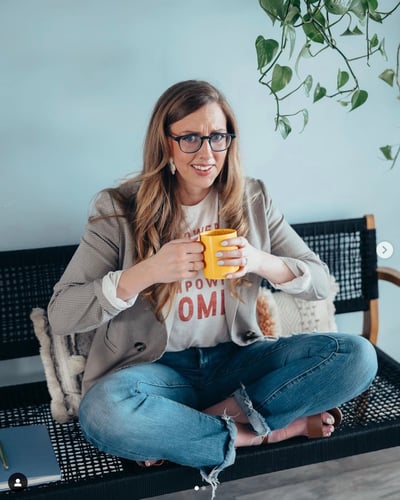 Working in different roles in marketing within HubSpot, I went from having to Google “ToFu marketing” after my initial interview, to leading a “HubSpot How To” video series on YouTube. In this series, we educated marketers on tons of topics, from SEO to using tracking URLs, to writing captivating headlines, through quick, bite-sized video tutorials.
Working in different roles in marketing within HubSpot, I went from having to Google “ToFu marketing” after my initial interview, to leading a “HubSpot How To” video series on YouTube. In this series, we educated marketers on tons of topics, from SEO to using tracking URLs, to writing captivating headlines, through quick, bite-sized video tutorials.
I had a chance to work on the demand gen side, where I got a good sense of the customer journey and owned prospect marketing. I also learned the joyful challenges of data attribution and reporting. In my demand gen role, I worked closely with our social team, content marketing and creative production, and sales enablement.
After working on prospect marketing and lead gen for some time, I moved on to the LeadIn team, which is now part of the HubSpot Marketing platform. It was fun — it was a startup within HubSpot, made up of me, a growth marketer, a product manager, a visionary team leader, and a bunch of incredible engineers. I went from trying to market HubSpot, an established software platform, to working to gain traction for a brand new HubSpot tool, and on the WordPress marketplace. It was a completely different experience and helped me learn how to do product marketing, build a brand from the ground up, and work with many different stakeholders within the company.
In our agency, I’ve been able to apply skills from both working at HubSpot and soaking up educational content on the blog and through the HubSpot Academy. I still use HubSpot resources, and honestly learn so much working on every report and project with the HubSpot team. We’re constantly learning new best practices from research reports, and about the consumer preferences that are changing.
It’s exciting to be able to lean on foundational skills from HubSpot, like testing and optimization, when approaching any new client challenge or creative project.
A passion for design
HSFS: What sparked your initial interest in graphic design?
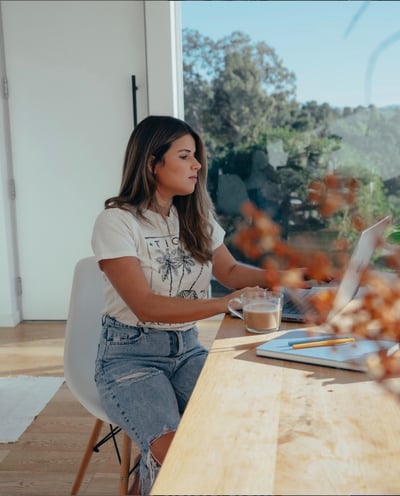 Gabby: I first found interest in design when I was around 13 years old. It was on the first social media platform, MySpace, that I learned what digital design was. Other people on the platform created MySpace layouts and designed HTML/CSS templates you could install to personalize your page. My older brother helped me get Photoshop and I began watching tutorials on YouTube, reading blogs, and learning all I could about design and code. Eventually, I created my own custom MySpace layouts and built my own website for MySpace resources — my first design business.
Gabby: I first found interest in design when I was around 13 years old. It was on the first social media platform, MySpace, that I learned what digital design was. Other people on the platform created MySpace layouts and designed HTML/CSS templates you could install to personalize your page. My older brother helped me get Photoshop and I began watching tutorials on YouTube, reading blogs, and learning all I could about design and code. Eventually, I created my own custom MySpace layouts and built my own website for MySpace resources — my first design business.
When I got to high school, I continued learning by taking design classes and constantly designing in my free time. I edited photos in Photoshop, created abstract artwork with my photography, and created invitations for friends’ birthdays, or whatever design projects anyone needed. I’ve always been passionate about design and that led me to teach myself everything about it, knowing that someday I would make it my career.
HSFS: What have been some of the biggest challenges you’ve faced in your career?
Gabby: One of the biggest challenges throughout my career has been negotiating, and having the courage to ask for what I deserved to be paid.
I also had to learn how to interview well and explain what I know in a way that translates to others. Over the years, I’ve built up the confidence to know what I want with my career and pursue it, whether by networking, asking for more complex, challenging work, changing jobs, or advocating for design resources.
The origins of CXD Studio
HSFS: What led you to join forces and create CXD Studio?
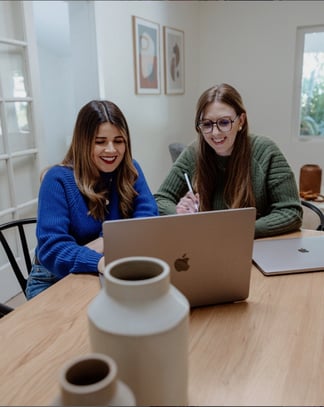 Katherine: I was working in my first full-time marketing role as a marketing associate at an email marketing company. I hired Gabby as a graphic design intern on my third day in the role. We shared an office and quickly became a strong creative team — and the ideas never stopped flowing. We started talking about creating a business within the first few months of working together. Then, each of us started freelancing on the side. I took clients for copywriting and marketing projects, and Gabby took design clients.
Katherine: I was working in my first full-time marketing role as a marketing associate at an email marketing company. I hired Gabby as a graphic design intern on my third day in the role. We shared an office and quickly became a strong creative team — and the ideas never stopped flowing. We started talking about creating a business within the first few months of working together. Then, each of us started freelancing on the side. I took clients for copywriting and marketing projects, and Gabby took design clients.
Gabby: Many of our clients needed support on the opposite side, which led to us referring clients to each other, and eventually partnering up and officially forming our business in 2017. We complement each other creatively and have a strong understanding of how copywriting and design impact each other, which has been an important part of what makes our business special.
The challenges and rewards of owning a company
HSFS: What has been the most challenging part of building a company and what has been the most rewarding?
Katherine: The most challenging part of growing a business is the ups and downs. Building a business requires a ton of patience and resilience, and it can be tough to push through slower times or uncertainties. But having Gabby as my cofounder and business partner has made it all possible. We balance each other out and when one of us is feeling less motivated, the other one helps bring up the energy and push us ahead. We help each other creatively and both bring different skills and perspectives to the table.
The most rewarding part of building a business for me has been collaborating with and inspiring fellow women to pursue creative careers. We work with incredible freelancers from around the world and it’s so empowering to be part of someone’s journey toward financial freedom and finding a career they’re passionate about. We also get to work with so many badass professionals in different industries and be creative through experiments and interesting projects.
HSFS: What would you say has been the biggest win for CXD Studio thus far?
Gabby: Our biggest win for our business has been growing enough so that Katherine and I could go full-time. We started CXD Studio in 2017 when we both had full-time marketing and design roles and we never imagined it would one day be our full-time jobs. Our main goal for starting the business was to have creative freedom, work with exciting new brands, and expand our skills. Of course, we also wanted to earn some extra money on the side as well.
As we began to grow, we worked nights and weekends while also managing our full-time roles and gained enough momentum to sustain full-time jobs for both of us and eventually hire my cousin as our finance manager/business manager/project manager.
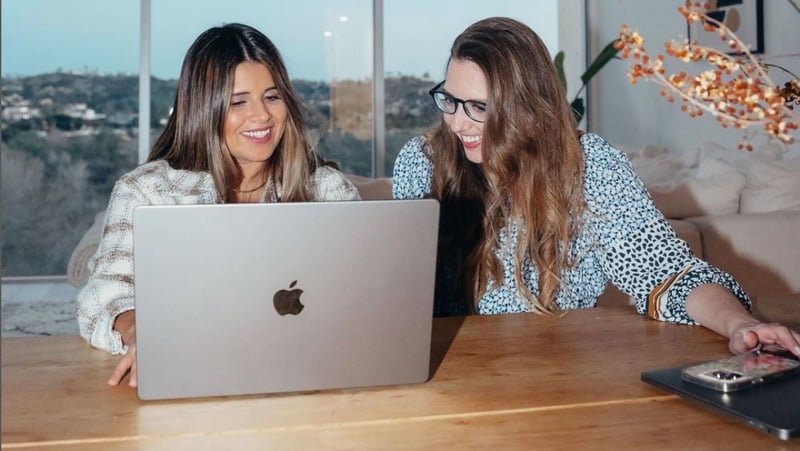
Finding the right audience and industries
HSFS: How do you find and secure clients for CXD?
Gabby: A lot of our business comes through word of mouth — Katherine and I both have strong networks in the Boston tech community (and beyond) from our years of experience in-house and with various agencies. We’ve continued fostering these relationships over the years when people change roles and companies, or move locations. We’ve also become a sort of a “preferred vendor” throughout several enterprise organizations, expanding our reach across different teams who need content marketing support.
HSFS: What types of companies do you target?
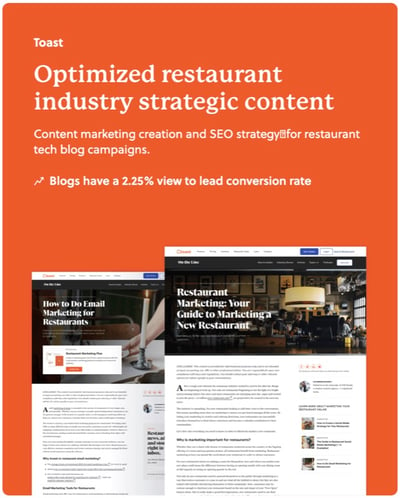 Katherine: We target enterprise B2B SaaS brands who believe in the value of content marketing. Our best work happens when we become partners with our clients and we can take ideas and turn them into growth opportunities, and the longer we work together, the more we can do with creative resources.
Katherine: We target enterprise B2B SaaS brands who believe in the value of content marketing. Our best work happens when we become partners with our clients and we can take ideas and turn them into growth opportunities, and the longer we work together, the more we can do with creative resources.
HSFS: How did you determine which areas of content marketing you wanted to focus on?
Gabby: When we started out, we took on any marketing client from an energy company to a local restaurant, to a family cookbook website. Then, as we gained more experience freelancing and in our in-house roles, we began taking more software and tech clients and ultimately landed on specializing in primarily enterprise-level B2B SaaS brands. In terms of services, we’ve figured out where content marketing teams need the most support, and what aligns best with our skills and experience. That led us to focus on short and long-form strategic marketing content, like reports and ebooks, and all of the content and strategy that goes along with launching these campaigns. Our client’s biggest pain point is that they’re strapped for resources, and need a team that’s familiar with their brand, personas, and goals, and can work quickly while producing high-quality content.
HSFS: Tell me about the eight key services you provide for clients.
Katherine: We offer content strategy, copywriting, and design for short and long-form content like blogs, ebooks, and guides. This can mean just the downloadable content itself, or the whole campaign, with a landing page, email nurture sequence, promotional assets, and ad creative. We do content marketing and SEO strategy, including developing editorial calendars, and we love writing executive thought leadership content. Over the years, it’s been fun working with many teams across enterprise organizations, like product, sales enablement, marketing, and research.
Company goals and industry trends
HSFS: What are your short and long-term goals for the company?
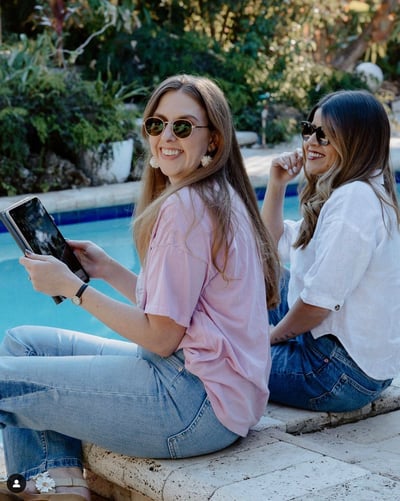 Katherine: Short-term — we want to build up our agency portfolio and work on creative projects with clients who we can develop great relationships with. Long-term — we want to support creatives in growing their careers and starting their own businesses. We envision having a creative studio that’s part co-working space, part coffee shop/smoothie shop, and part event space. And maybe even starting an academy where we teach aspiring creative professionals about turning their creative skills and passions into a business.
Katherine: Short-term — we want to build up our agency portfolio and work on creative projects with clients who we can develop great relationships with. Long-term — we want to support creatives in growing their careers and starting their own businesses. We envision having a creative studio that’s part co-working space, part coffee shop/smoothie shop, and part event space. And maybe even starting an academy where we teach aspiring creative professionals about turning their creative skills and passions into a business.
HSFS: Do you have any specific goals as they relate to growth?
Gabby: In terms of business growth, our goal is to grow 25% year over year, eventually bring on more full-time hires, and expand our business offerings. We want to go all-in on the creative professional community and support others on their journey.
HSFS: Where do you see the future of content marketing? Are there any trends that you’re currently finding in the industry?
Katherine: My prediction is that content marketing will go in two directions — one is tech-driven, AI-powered strategic marketing, for areas like advertising, SEO, website management, and CRO. The other is creative, almost “artisan content”? Yes, I just coined that term! We’ll see a rise in hand-drawn illustrations, maybe even paired with cool AI/AR/VR features, long-form data-driven articles and reports with custom data visualizations and interactive webpages, and curated email newsletters with unique branding and more opinion pieces. I’m excited to see how we can combine the old with the new and creatively integrate art, marketing, and business. It’s a new era of Mad Men-level creative campaigns and we’re here for it.
HSFS: What are some of the biggest design problems you see businesses making, and how do you correct them?
Gabby: One of the biggest design problems I’ve seen has been with the rise in so many lightweight, accessible design tools. Because some managers think that these tools and free templates are a “too good to be true” solution to creating content, they task marketers with creating complex design projects, like reports and data visualizations. This can lead to distracting, inconsistent content which ultimately hurts your brand and can miss foundational design and CRO principles like accessibility, hierarchy, and showcasing the product strategically to encourage conversions.
We’ve had clients come to us with poor quality work that a marketer spent days or weeks working on, only to get frustrated and produce something that doesn’t perform. When marketers can spend their time developing the campaign instead of trying to do a more advanced design than they realize, there’s a much higher return on investment and likelihood of success. There is a time and place for marketer-friendly design tools, it’s just not every project and every asset.
Combating challenges
HSFS: What challenges (if any) have you had as a woman in your industry?
Katherine: One of the biggest things I’ve felt as a woman in this industry has been that I wasn’t taken seriously as a) a young woman, and b) someone in marketing with a Communications degree. There was a ‘boys club’ attitude at times throughout my career that made it feel more difficult for my ideas to be noticed or taken into consideration, and harder to get promotions or lead projects. I relied on allies to help me get recognition and felt more empowered when I worked on a team of women.
Gabby: I’m grateful to be able to lead a team with my business partner, Katherine, where we can work with clients who respect us, and give that same respect to our coworkers and freelancer community.
Advice for aspiring women founders
With women-owned businesses on the rise, we asked Katherine and Gabby what advice they would give to other aspiring women founders. They both unanimously agreed that it all starts with building your network and not being afraid to put yourself out there.
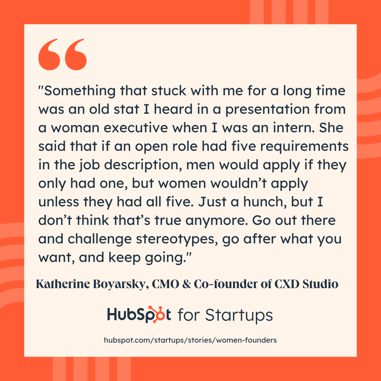
|
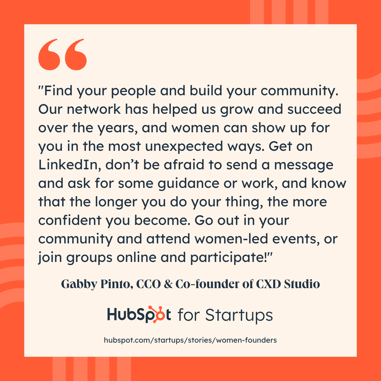
|
About HubSpot for Startups
HubSpot for Startups provides founders with resources they need to grow and scale their companies. Startups can apply though over 4,000 partnering organizations to save up to 90% on their first year of paid HubSpot service, plus up to 30% off ongoing!
